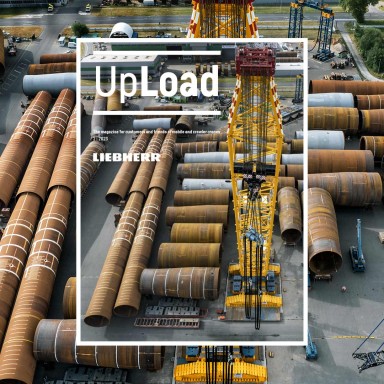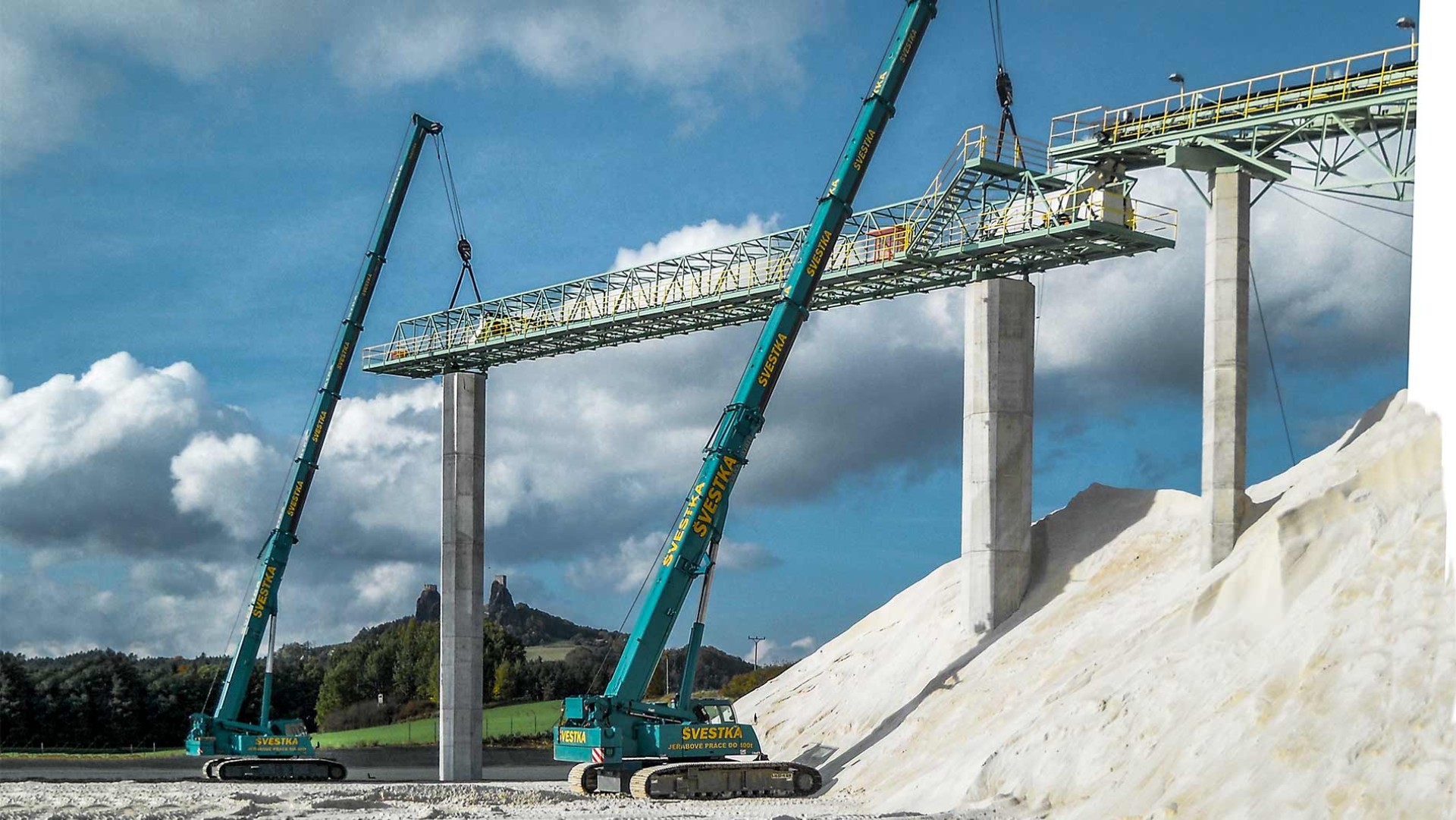
3 minutes - magazine 02 | 2023
Our customers – visionaries and “midwives”
At the end of 2004 we had a visitor from the Czech Republic at the Liebherr factory in Ehingen: Pavel Švestka, an industrious entrepreneur, with a pretty big wish in tow.
How a customer request changed the crane world – the birth of the LTR series
Our engineers were asked to develop a new type of crane for his company – not the smallest request theyʼd ever received! The animated conversation between Pavel Švestka and Hans-Dieter Willim, Head of Design at the time, can be described as the birth of the Liebherr telescopic boom crane on crawler travel gear. Here is a brief glimpse into this unusual crane story, one which ended up writing itself.
By the way, itʼs not unusual for our customers and partner companies to be actively involved in writing such stories. After all, it is their employees who bring new things to life with Liebherr cranes on construction sites all over the world, day in, day out. They gain such valuable experience there. This means theyʼre acutely aware of the strengths and weaknesses of the machines and can see how they could be even more functional, powerful and economical. This “sharing of innovations,” which we can admit unreservedly and proudly to our customers, is especially true of the Liebherr telescopic crawler crane. Without Pavel Švestka, there wouldnʼt be an LTR like there is now. At least not for as long as there has been!
A little flashback: in 1989, the “Velvet Revolution” in Czechoslovakia ushered in political change. A short time later, Pavel Švestka founded a small demolition, earthmoving and transport company just outside Prague. Thanks to the economic revival, the demand for construction machinery increased significantly. Švestka recognised the growing need for equipment to handle heavy components such as steel elements or precast concrete parts and ordered his first four mobile cranes from Klimex, our Czech sales and service partner.
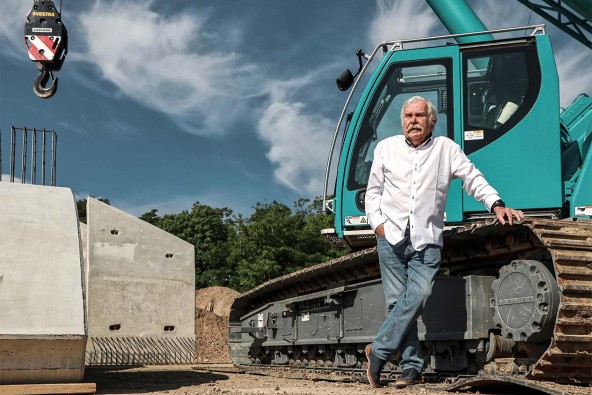
Visionary - Pavel Švestka recognised the advantages of telescopic cranes on crawler chassis early on.
Requirements from personal experience
But that didnʼt suffice. With regard to the flexibility required, he had the “crane of his dreams” clearly in mind: flexible and capable of transporting heavy parts from the road to the construction site on rough terrain – with telescopic boom and crawler travel gear. “However, the market for construction machinery at the time didnʼt have that on offer,” Švestka recalls. “Thatʼs why I went to Ehingen with Karel Kladiva from Klimex. There, Liebherrʼs chief designer was fascinated by the idea and placed the superstructure of the 100 tonne mobile crane on a crawler chassis. Of course only “in his mind!” remarks Švestka, describing the scene in Hans-Dieter Willimʼs office. The protagonists agreed that the telescopic crane on crawler carriers could also be used for short-term operations in industrial plants and halls as well as for assembly work.
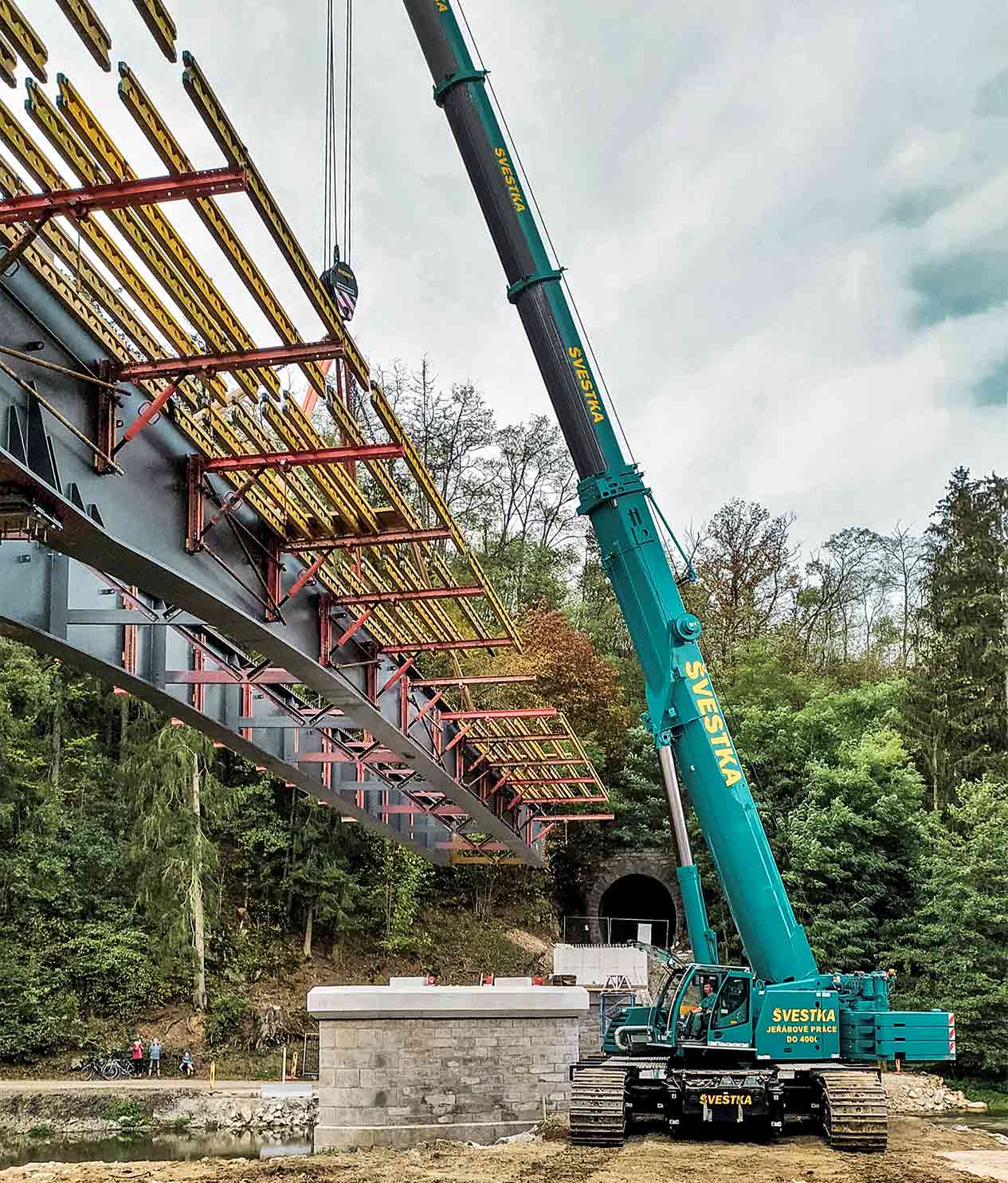
Mobile with large load - “Telescopic crawler cranes play an indispensable role in our company during demolition work, in assembly, on difficult terrain and in confined spaces,” Pavel Švestka tells us. Here, his LTR 1220 is lifting the huge component of a new railway bridge. Together with an LTR 1100, the 105 tonne, 64 metre long steel structure was transported in tandem from the assembly site to its destination and placed on bridge pillars.
Market analysis and specifications
Despite all the good prospects and visionary power, there were also some initial reservations about spontaneously setting off on such new paths: “Considering the effort involved, a single-unit order was of course not an option,” recalls Dr Ulrich Hamme, who was managing director of design at the time (and still is). But did the market have the demand for a small series? This was the reason for a market and competition analysis. “To be honest, this was going on while we were conducting the initial design studies and kicking off the process for successful crane development,” Hamme says somewhat mischievously.
Everything else went quickly as well: the technical specifications were ready in January 2005 after analysis and costing had been completed. In April, the Management Board decided to base the newcomer “LTR 1100” largely on the superstructure of the LTM 1100-4.1 and the crawler travel gear of the HS 855 hydraulic rope excavator from from our sister company in Nenzing. Just six months after production release, we handed over crane number 1 to Švestka. Incidentally, this was the first of the 1,000 LTR cranes that would be produced.
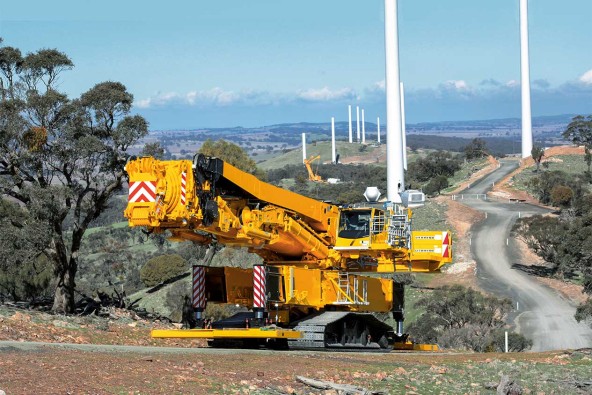
XXL available too - We have also transformed the principle of the telescopic crane on crawler travel gear in the upper class of our lifting equipment. The LTR 11200 was launched in 2009 and was produced for a few years. This equipment is mainly found in large wind farms, like the crane of our customer McNally here in Australia. The LTR 11200ʼs ability to move quickly to the next job site with retracted telescopic boom is one of its enormous advantages.
Vision leads to success
This beautiful story set amidst our everyday lives shows more impressively than any glossy brochure that guys like Pavel Švestka are able to assess trends and develop visions – and what we can do with them. The LTR 1100 was ultimately only the first of a whole series. As its successors, we developed the smaller telescopic crawler crane with a lifting capacity of 60 tonnes, the powerful LTR 1220 and finally the LTR 1040. All four still feature in our portfolio, and weʼre not finished with this type of crane just yet. Whether for assembly work, for pick-andcarry jobs on large construction sites, as assistant cranes in wind farms or for setting up large crawler cranes: the nimble, manoeuvrable and powerful LTR machines are now indispensable.
The same is true for Pavel Švestkaʼs company. His crane fleet now comprises ten machines from Ehingen, including four LTR cranes. Pavel Jr., son of the companyʼs founder, recently took delivery of their latest machine at the Bauma trade fair in Munich. The machine in question was an LTR 1060.
This article was published in the UpLoad magazine 02 | 2023.

